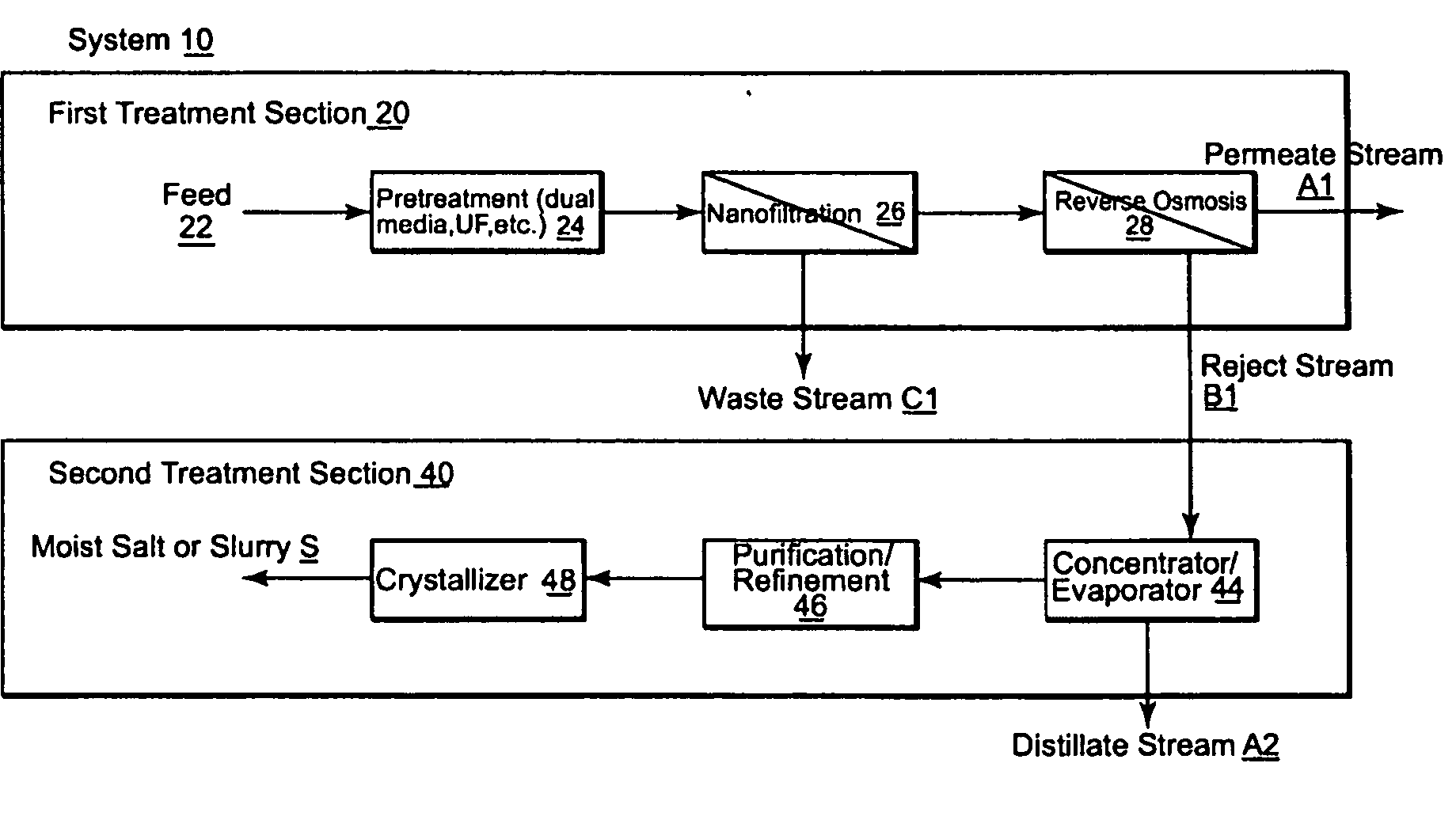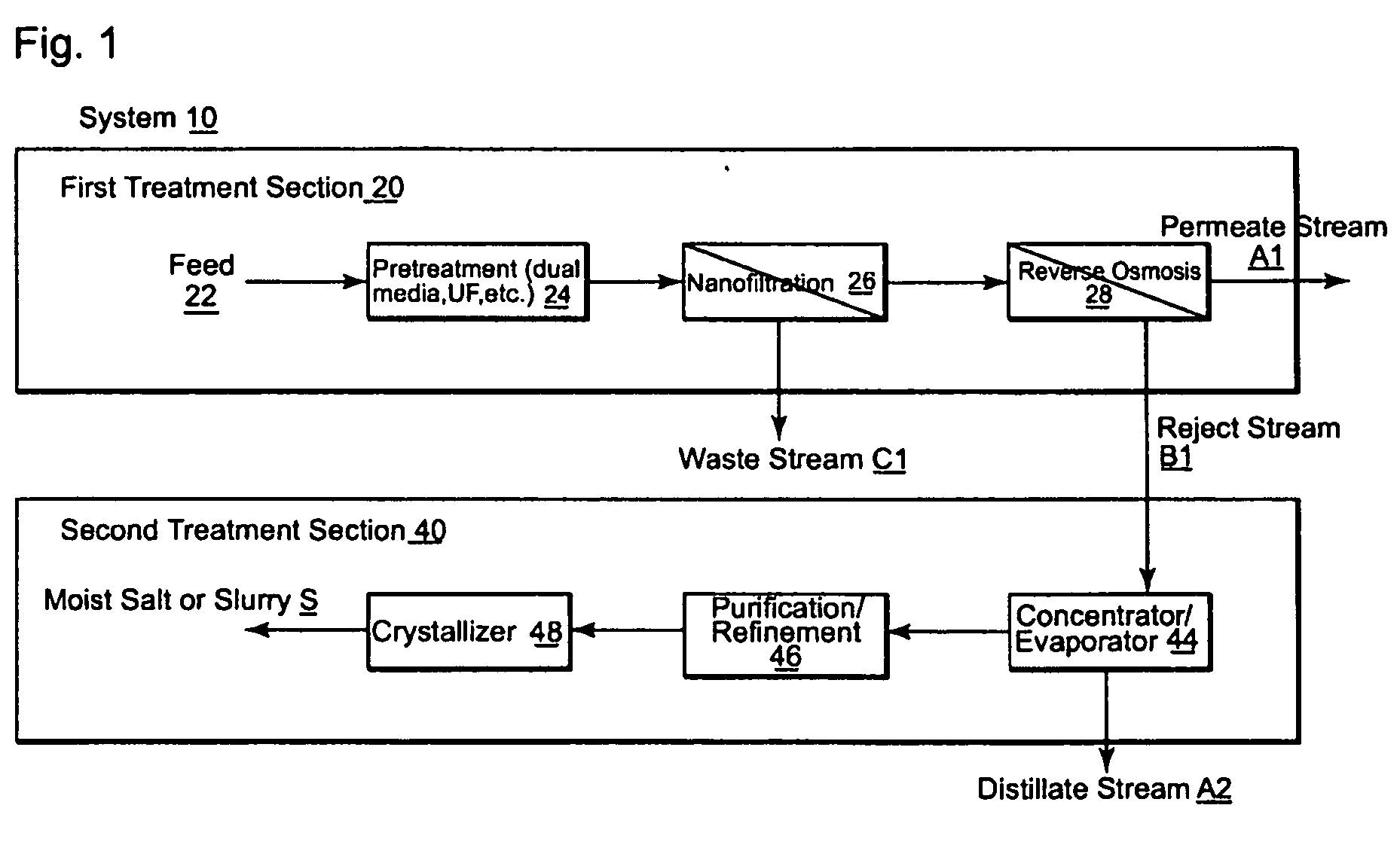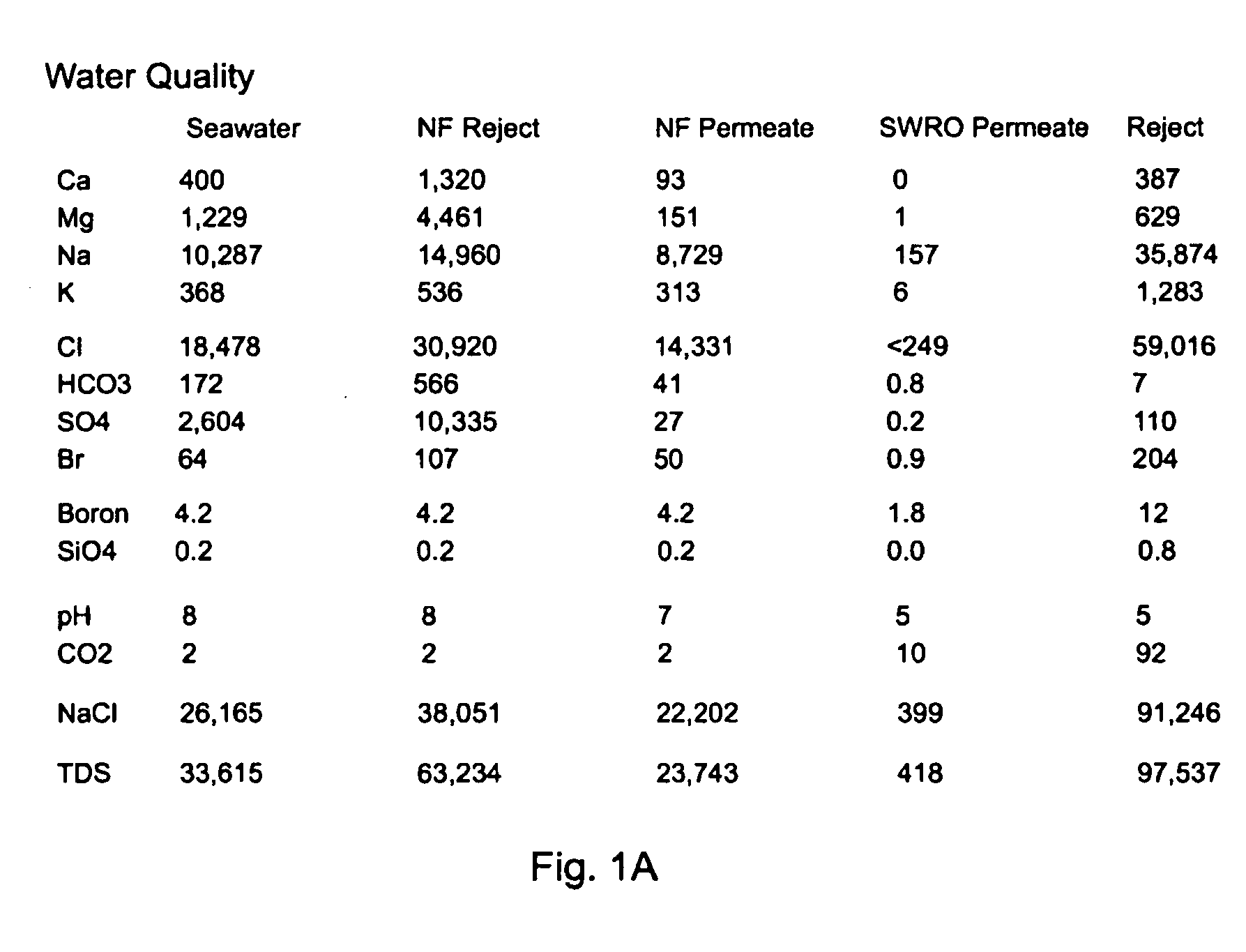Water desalination plant and system for the production of pure water and salt
a technology of water desalination plant and water production system, which is applied in the direction of multi-stage water/sewage treatment, membranes, separation processes, etc., can solve the problems of large amount of theoretical or modeling tools, lack of general seawater water and salt process, and high cost, and achieve high purity, large industrial capacity, and high recovery
- Summary
- Abstract
- Description
- Claims
- Application Information
AI Technical Summary
Benefits of technology
Problems solved by technology
Method used
Image
Examples
Embodiment Construction
[0026]Approximating language, as used herein throughout the specification and claims, may be applied to modify any quantitative representation that could permissibly vary without resulting in a change in the basic function to which it is related. Accordingly, a value modified by a term or terms, such as “about”, is not limited to the precise value specified. In at least some instances, the approximating language may correspond to the precision of an instrument for measuring the value. Range limitations may be combined and / or interchanged, and such ranges are identified and include all the sub-ranges included herein unless context or language indicates otherwise. Other than in the operating examples or where otherwise indicated, all numbers or expressions referring to quantities of ingredients, reaction conditions and the like, used in the specification and the claims, are to be understood as modified in all instances by the term “about”.
[0027]“Optional” or “optionally” means that th...
PUM
| Property | Measurement | Unit |
|---|---|---|
| pressures | aaaaa | aaaaa |
| size | aaaaa | aaaaa |
| purity | aaaaa | aaaaa |
Abstract
Description
Claims
Application Information
 Login to View More
Login to View More - R&D
- Intellectual Property
- Life Sciences
- Materials
- Tech Scout
- Unparalleled Data Quality
- Higher Quality Content
- 60% Fewer Hallucinations
Browse by: Latest US Patents, China's latest patents, Technical Efficacy Thesaurus, Application Domain, Technology Topic, Popular Technical Reports.
© 2025 PatSnap. All rights reserved.Legal|Privacy policy|Modern Slavery Act Transparency Statement|Sitemap|About US| Contact US: help@patsnap.com



